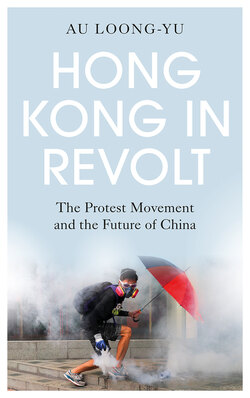Читать книгу Hong Kong in Revolt - Au Loong-Yu - Страница 23
Political Inclination of the Protesters
ОглавлениеThe yellow camp itself is differentiated by competitive political inclinations. The CCPOS differentiated between seven categories of political inclination in its October 2019 across-the-board survey (i.e. including the pro-Beijing parties). For our discussion about the yellow camp we choose four of them, as below:22
Table 1.1 Political inclinations of protesters, 2014–2019
| September 2014 | October 2019 | |
| Moderate democrats | 37.9% | 40.0% |
| Radical democrats | 3.9% | 6.2% |
| Localists | n/a | 14.1% |
| Centre/no political inclination | 48.6% | 33.5% |
In 2014 there had not been any survey about the localists yet, as it was a new phenomenon. To understand the picture of the localists’ mass base before 2019, we can refer to another study which showed that by March 2016 the localists accounted for 8.4 percent amongst all categories of political inclination.23 The above surveys show the strength of the localists and how fewer people were neutral in 2019 than in 2014. The ‘radical democrats’ also experienced a significant increase while the pan-democrats’ growth was the least impressive.
Another survey showed the political inclinations of protesters at different protests:24
Table 1.2 Political inclinations of protesters, June–July 2019
| 9 June* | 12 June | 16 June* | 21 June | 27 July* | |
| Moderate democrats | 43.2% | 29.5% | 41.1% | 29.8% | 34.9% |
| Radical democrats | 3.2% | 2.1% | 3.4% | 7.8% | 8.5% |
| Localists | 27% | 25.4% | 18.0% | 28.6% | 37.4% |
| Centre/no political inclination | 21.1% | 38.9% | 21.3% | 21.1% | 8.9% |
* These three protests were the largest, while the remaining two were much smaller, but more radical.
One can see that, at the protests surveyed in Table 1.2, there was a higher share of ‘localists’ than in the city-wide survey in Table 1.1. Neither survey must lead us into believing that the relevant political parties were necessarily as strong (or as weak) as the survey might suggest. Firstly, it is debatable how much these political categories can actually tell us. While the term ‘pan-democrat’ had a clearer meaning – those who worked within the Basic Law and were in general law-abiding and therefore non-violent – the term ‘localist’ is quite confusing. ‘Localists’ range from simply ‘loving Hong Kong’, and thinking that Hong Kongers’ identity must be respected, to outright hatred against mainland Chinese people (for the latter category see Chapter 2). It was not clear how the many thousands of sou jan, or first-time activists, interpreted this term. The term ‘radical democrats’ is also a puzzle. One may argue that this lack of clarity is a reflection of the belated development of party politics in general in Hong Kong, and also of the legacy of colonialism.
Secondly, we should briefly discuss the underdevelopment and organisational weakness of all political parties in Hong Kong. Therefore, when people identified themselves as being from a certain ‘current’ this did not necessarily imply that they identified with a particular party. When two million people took to the streets on 16 June, the vast majority of them did not belong to any party at all. Also, the high proportion of people identifying as ‘centre/no political inclination’ might suggest the proportion of people whose political inclinations remained fluid and could change relatively easily. For the many thousands of sou jan this was their first or second time that they had joined any protest, waved any flag, or clashed with the police.
